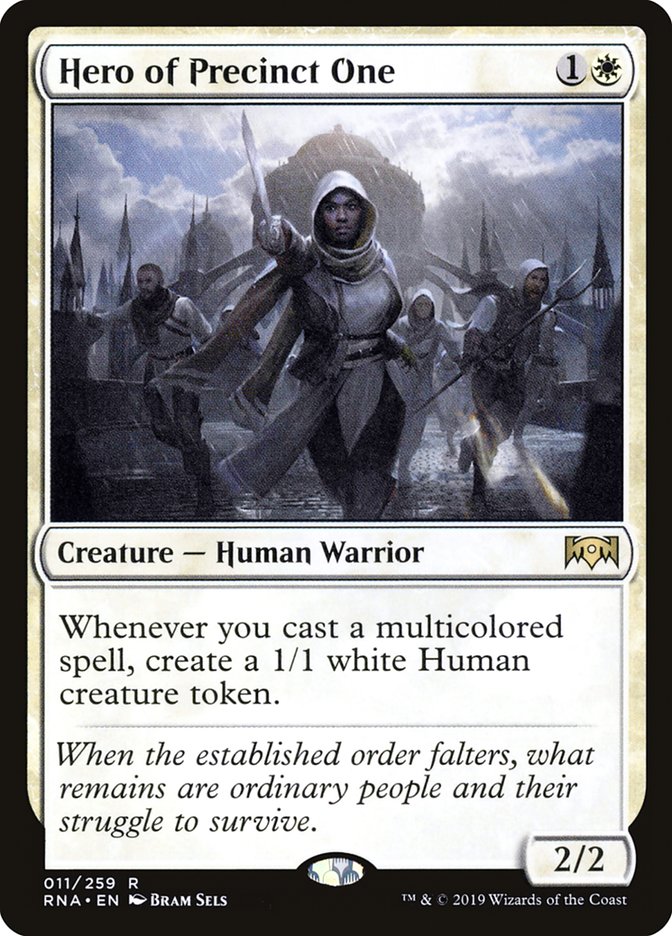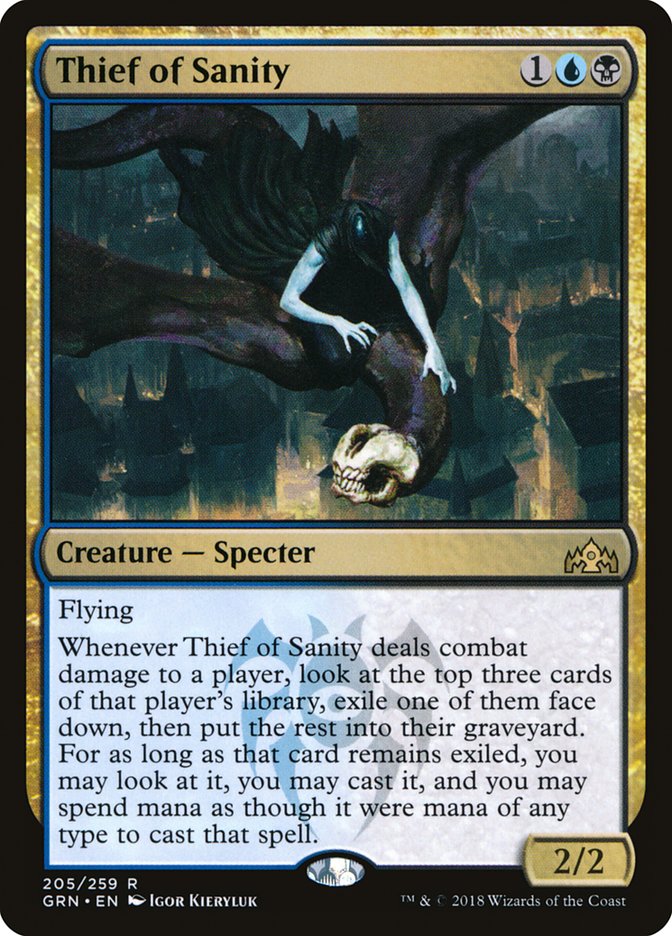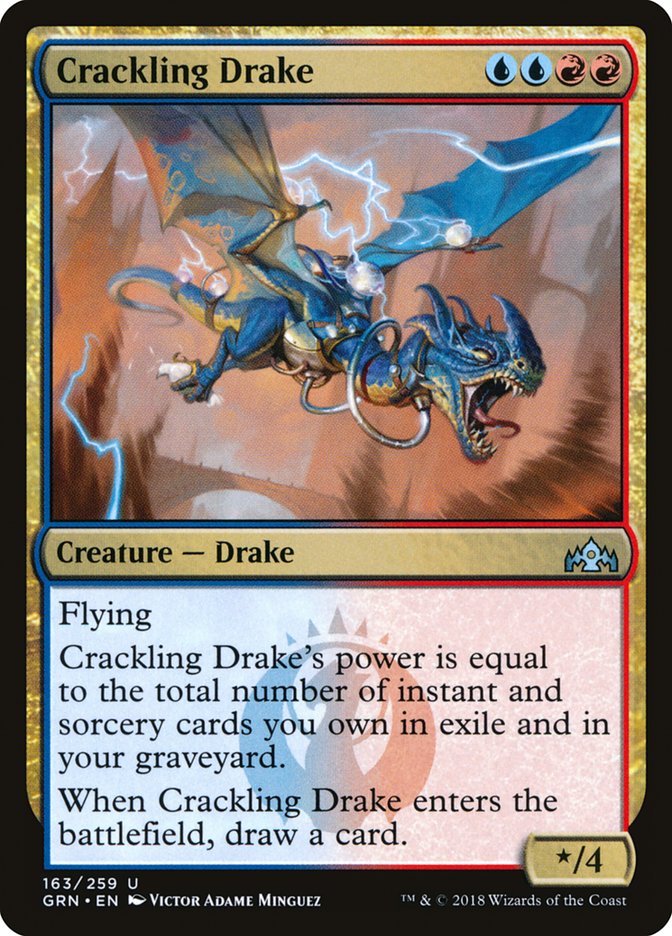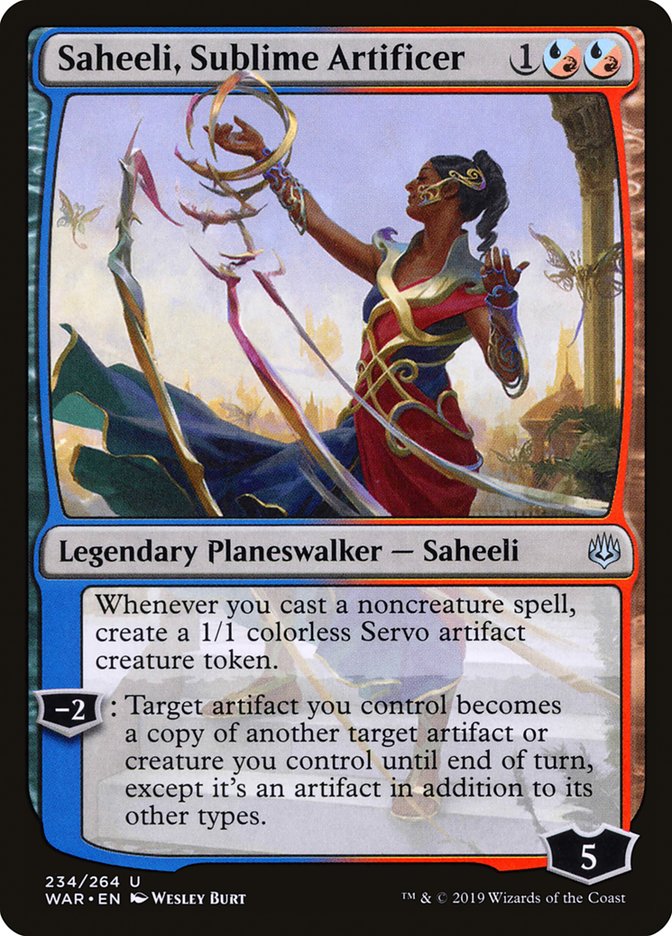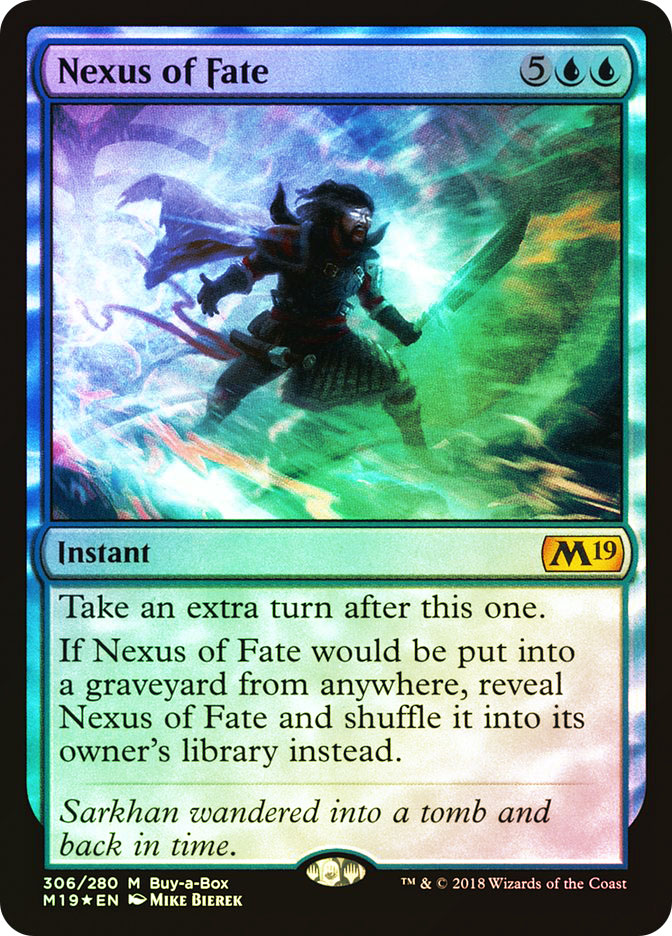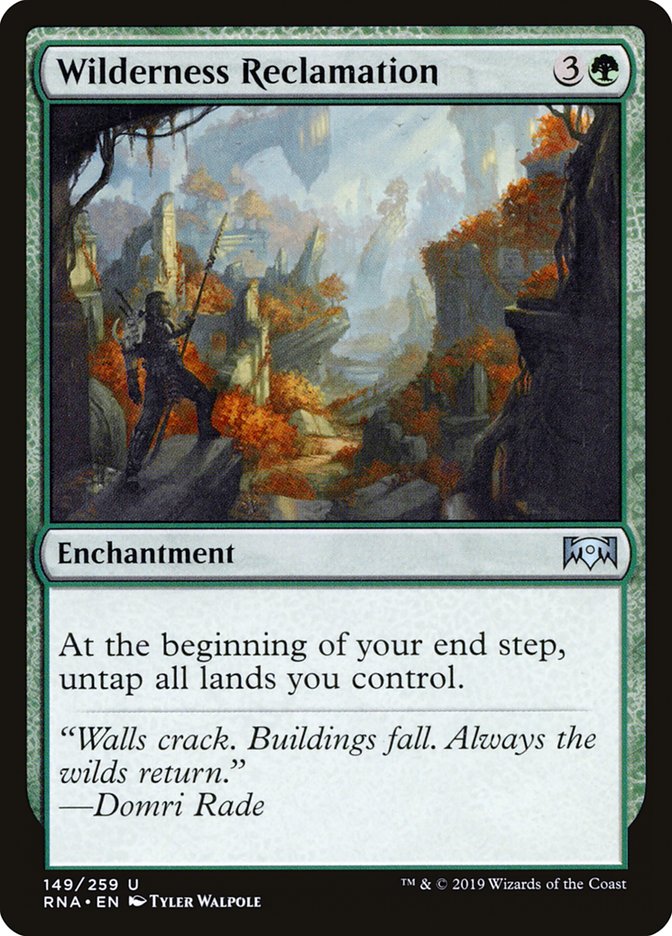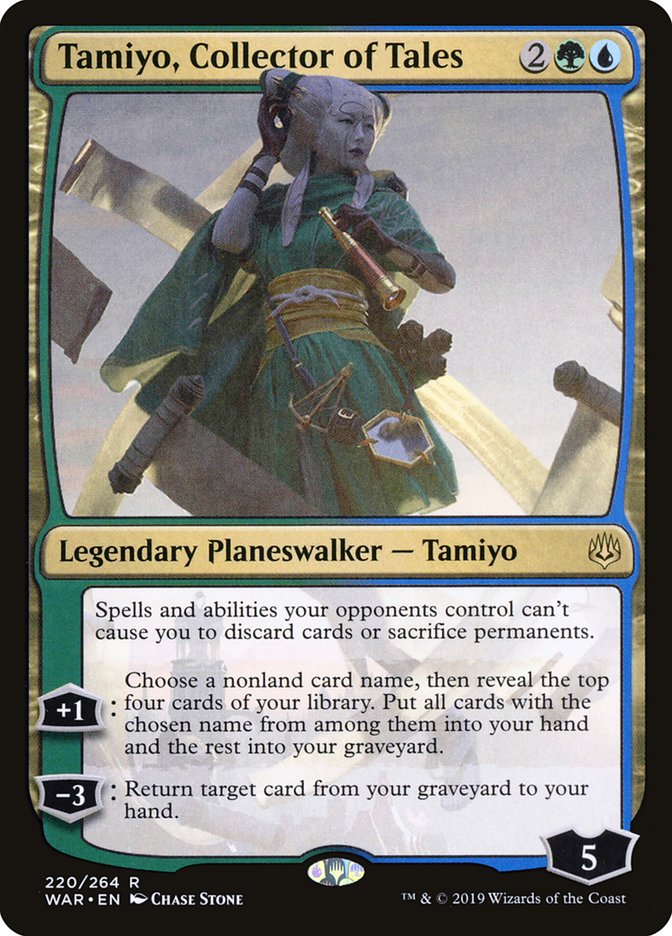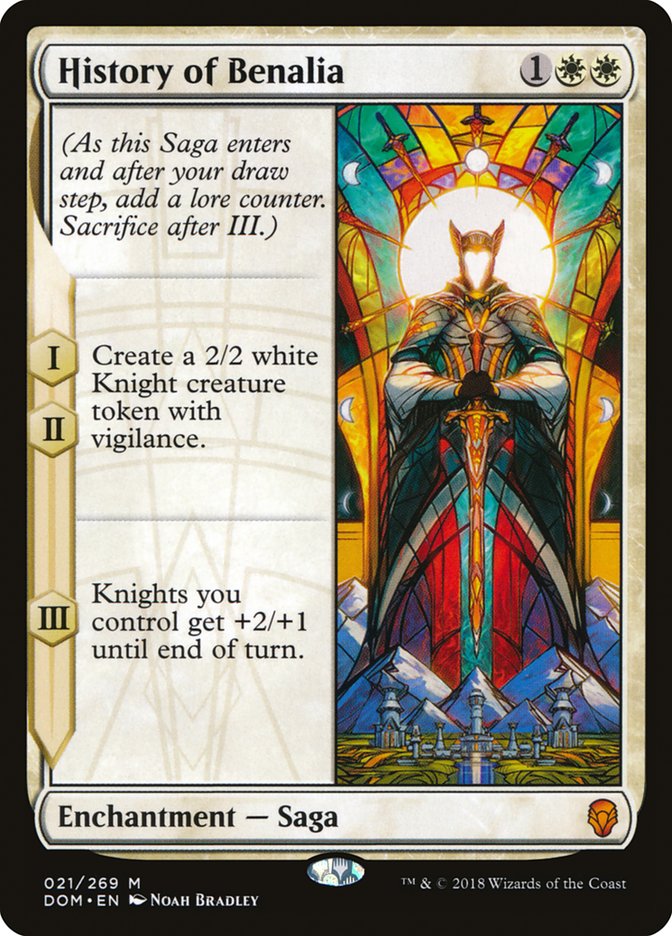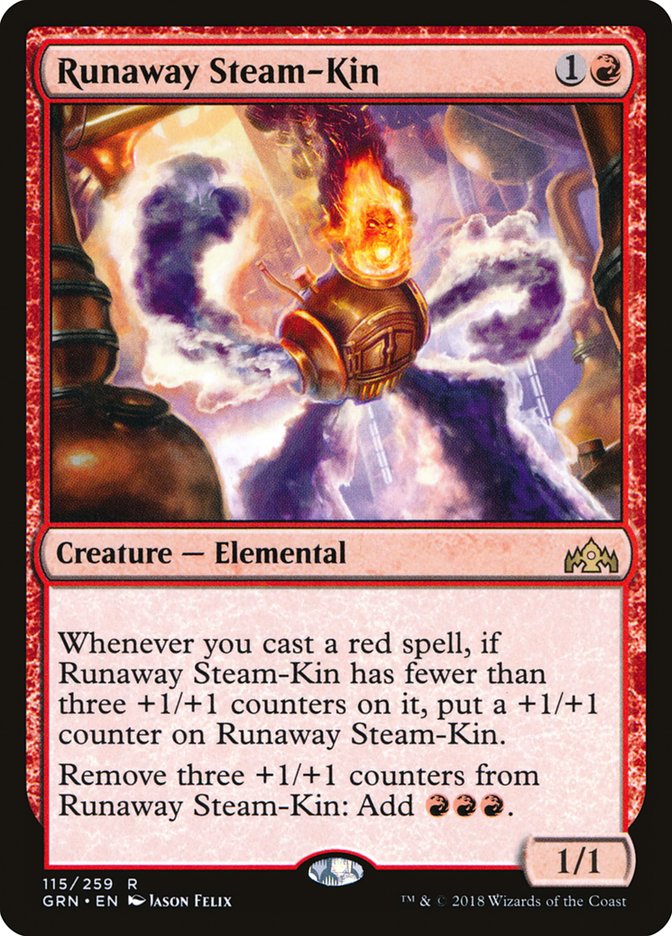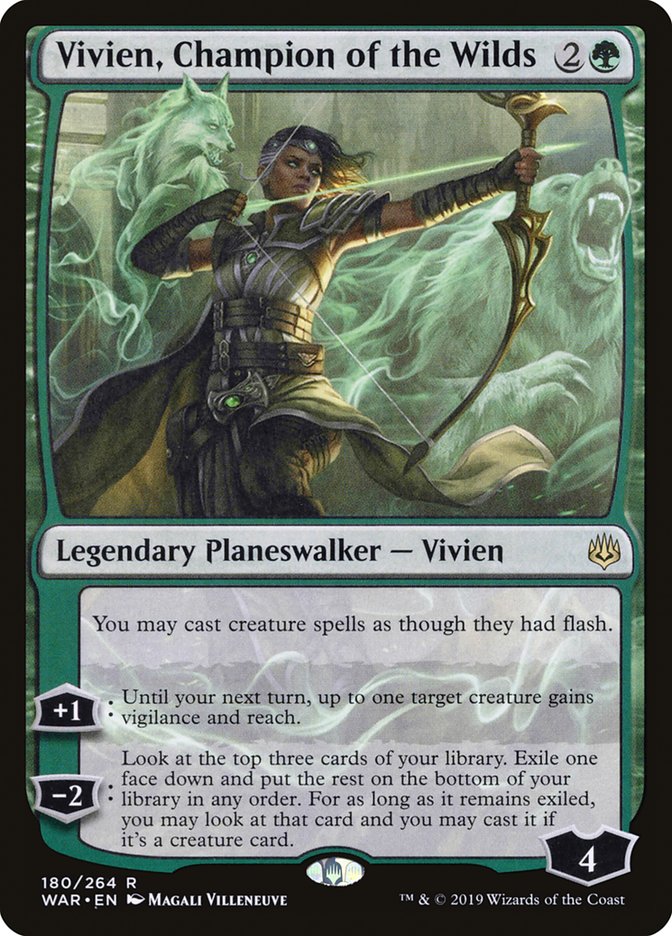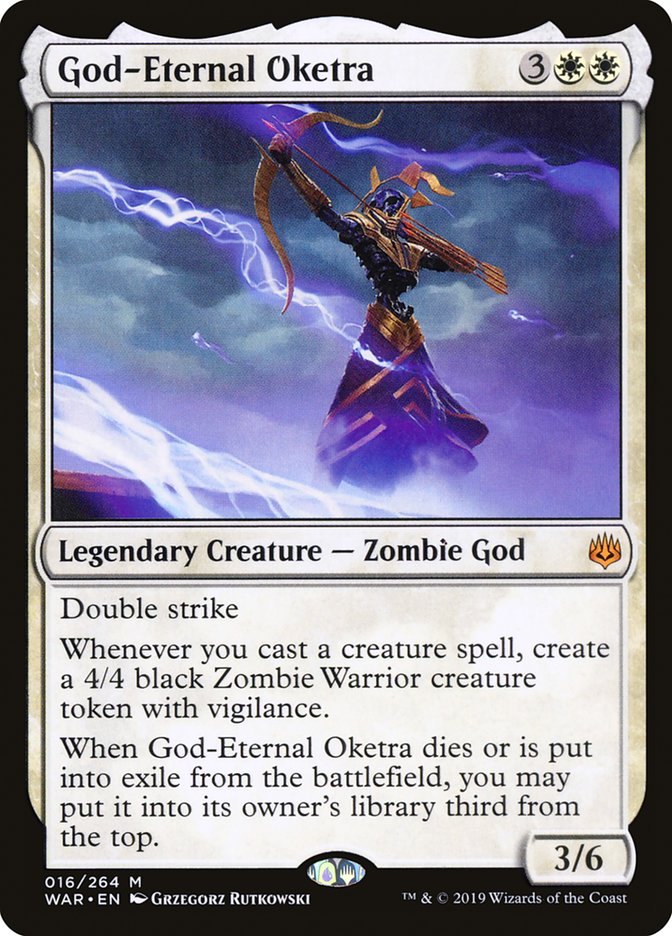Welcome to another edition of Fact or Fiction! Today, Todd Anderson, Bryan Gottlieb, and Brad Nelson are here to render their verdicts on five statements about War of the Spark Standard and SCG Syracuse. Don’t forget to vote for the winner at the end!
1. Esper Midrange is better than Esper Control and is the better Esper deck in War of the Spark Standard.
Todd Anderson: Fiction. I don’t think Esper Midrange is that strong. I heard a lot of chatter this past weekend about how Esper Midrange was just an Esper Control deck that played Grizzly Bears, and I’m inclined to agree. You turn on removal like Cast Down or Shock while providing very little in return. The matchups where Hero of Precinct One survives are few and far between, but it’s not even that important in those matchups because the opponent goes way over the top of you.
Esper Control is the superior Esper deck in Standard, though it is a bit worse at pushing Teferi, Time Raveler to its limits. But Esper Control is great at making use of the +1, which allows you to cast Kaya’s Wrath mid-combat, or just hit ’em with Thought Erasure during their draw step.
I do think both decks are fine, and Esper Midrange will definitely be better when opponents are playing a lot of Teferi, Time Raveler. That card just shutters counterspells, makes Chemister’s Insight significantly worse, and ultimately just simplifies your turns since the opponent can’t interact. I just think Esper Control is more focused, more streamlined, and less vulnerable to commonly played removal spells.
Bryan Gottlieb: A Muted Fiction. Ah excellent. I get to kick off Fact or Fiction with some centrism. Just what everyone is here for.
Esper Midrange is a Tier 1 Standard deck. Esper Control is also a Tier 1 Standard deck. There will be weeks where one is better than the other, but a well-tuned version of either archetype is entirely capable of winning any given tournament. Based on decks that I believe to be on the rise (such as Izzet Phoenix), an advantage in the head-to-head matchup, and my own personal predilections and efforts to tune the archetype, I am presently playing Esper Control. I don’t think you are throwing your tournament away by choosing Esper Midrange, and in fact, I may be joining you by next week.
I realize that bombast and bold claims win championships here in the Fact or Fiction arena, but I just don’t have it in me for this question. Both decks are very good. Play the one you prefer.
Brad Nelson: Fact. I don’t even think this is close. Esper Control is widely played in a format that’s gone wide. There are hyper-aggressive decks focusing on creatures, midrange decks full of difficult-to-answer planeswalkers backed by hand disruption/countermagic, and even combo decks that have absurd inevitability. You’ll win games with Esper Control, sure, but the deck just doesn’t have what it takes to consistently be at the top tables.
Esper Midrange on the other hand is a deck full of cheap threats, answers, and disruption that can completely take over a game in a variety of ways. It also doesn’t succumb to many of these planeswalker passive abilities like Esper Control does. I have it as the best deck in the current metagame because of this.
2. With two Magic Online MCQ wins, Izzet Phoenix is a Tier 1 deck in War of the Spark Standard.
Todd Anderson: Fact. My record with Izzet Phoenix is something like 25-5 over the last week with the archetype. Seeing it win the most recent Magic Online MCQ further justifies my pick that it’s in the top tier of Standard. And Finale of Promise pushes it over the top.
If you watched VS Live! from this past Tuesday, you saw me just dunk on Ross with Izzet Phoenix, often ending the game with five or more cards in hand. Being able to re-cast Chart a Course makes sure the gas is always flowing and ensures you can consistently return Arclight Phoenix.
The trick, as always, will be finding the right build from week to week. Last week’s MCQ had a pretty huge emphasis on Saheeli, Sublime Artificer and Narset, Parter of Veils, both of which greatly improve your odds against all forms of Esper. And with the deck traditionally struggling against control, and especially those control decks utilizing Cry of the Carnarium, having two different three-mana planeswalkers definitely improves the matchup. This past weekend’s version tried to fit both Goblin Electromancer and Augur of Bolas into the deck, which looked odd at first but ended up being much better than I originally thought.
My article this week focuses on the archetype in great detail, so make sure to check it out.
Bryan Gottlieb: Fiction. We all have our own standards for inclusion in Tier 1, but for me, I look for decks with staying power and adaptability. In its Standard incarnation, Izzet Phoenix has always been a deck that takes advantage of specific holes in the metagame. A format’s inability to exile opposing threats, as well as answer flyers and haste creatures, will always leave an Arclight Phoenix-sized hole for this deck to blast through.
But when people are aware of Izzet Phoenix, the deck fades fast. How hard is it for Esper Midrange to pick up some extra Desparks and play a Lyra Dawnbringer? Is Esper Control just going to start playing Cry of the Carnarium again? (Yes.) How about more Narset, Parter of Veils? (Yes again.) What if Simic Nexus or some other hateful Tier 2 deck starts seeing widespread play?
All these eventualities strike me as things that would be too much for Izzet Phoenix to overcome. Izzet Phoenix may be the best at what it does, but what it does is predictable and linear. As such, I’d put the deck a step below the top tier of Standard.
Brad Nelson: Fiction. I’m under the belief that Izzet Phoenix’s recent results are due to a “perfect storm” scenario that’s currently happening. First off, much of the deck’s success has been on Magic Online where Nexus of Fate strategies are difficult to play due to the time constraints. This is, after all, one of Izzet Phoenix’s worst matchups, which could theoretically explain why it’s done so well on the platform. It’s also possible that Nexus decks are doing worse lately because the perfect builds haven’t been found yet.
Another reason for Izzet Phoenix doing well is that the format is all but ignoring it. There are so many new toys for players to fight with/against that finding proper hate for the strategy isn’t being explored. From past experiences, Izzet Phoenix is not a strong enough deck to withstand targeted hate, which is necessary for me to justify saying the deck is Tier 1.
3. Simic Nexus has no top-tier performances thus far and is actually a poor deck in War of the Spark Standard.
Todd Anderson: Fact. Teferi, Time Raveler is certainly tough for them to beat, even with the powerful addition of Blast Zone. I think the poor Week 1 performance was due to both Teferi, Time Raveler and Mono-Red Aggro having a good weekend. I expect that trend to continue, as I just haven’t had success with any form of Wilderness Reclamation in the last few months. Every single sideboard contains six or more cards for you to fight through, as you receive splash damage from both control and enchantment hate.
While the deck is certainly powerful, I just think all the sideboard options at their disposal are mediocre in comparison to what everyone else is bringing. Without traditional removal, Thief of Sanity is always going to be a problem. The same goes for Teferi, Time Raveler. And these two cards are why I was a huge proponent of playing Temur Reclamation over Simic Nexus, as the red splash gave you direct damage spells to deal with both. Unfortunately, I think neither offers the right tools to make the deck compatible with the current format.
Bryan Gottlieb: Fact. This one is a hard pill to swallow. Simic Nexus is the most powerful deck in the format – in a vacuum. But so much of what this format is presently about just disrespects everything that Simic Nexus is trying to do. The kicker is that much of this hatefulness is achieved without specifically targeting Simic Nexus. Teferi, Time Raveler and Narset, Parter of Veils are just incredibly powerful three-mana planeswalkers, forming the backbone of multiple archetypes. Mortify and Despark are top-notch removal spells. The countermagic du jour is Dovin’s Veto. Mono-Red Aggro is (spoiler!) by far the best aggro deck. And all of this would remain true even if Simic Nexus were a non-entity in the format.
If this deck is to make inroads, it’s in desperate need of a retool. At the risk of sending points towards one of my Fact or Fiction competitors, I think Brad’s Bant Nexus list is a step in the right direction. Nexus pilots must abandon the fallacy that they will ever get to just do their thing unimpeded.
Brad Nelson: Fact. Last season, I 100% believed going straight Simic was the best way to approach Nexus of Fate strategies, but things have changed now that War of the Spark has introduced so many passive-ability planeswalkers. It’s just too difficult to fight through these effects properly without stronger Plan Bs or answers for opposing permanents.
Right now, I’d say Bant Nexus is the way to go if you’re looking to take turns, but it’s still in the developmental stages. I have a lot of faith in the deck, though, and will be putting out an article about it later this week. I also used it as my weapon of choice in this week’s Magic Pro League Weekly matches, so I hope it is in fact the way to approach the deck!
4. Azorius Aggro, not Mono-Red Aggro, is the best aggressive deck in War of the Spark Standard.
Todd Anderson: Fiction. Both decks are very good, and I think their inherent value will solely rely on which deck has done better in the previous week. If Mono-Red did well in the previous week, expect Azorius Aggro to get a boost, because sideboard cards for red and white are drastically different.
The only real problem with Azorius Aggro is that it doesn’t have the free wins that Mono-Red can generate. Chandra, Fire Artisan and Experimental Frenzy are just absurd cards that run away with the game if left unchecked. And while Azorius Aggro has some starts that are also nearly impossible to beat, I think Mono-Red offers a bit more consistency. And when I’m looking to play an aggro deck, consistency is one of the most important elements.
I might change my tune in the coming weeks, as the sideboard options for Azorius are great, but splashing counterspells with only eight or nine sources is dangerous. And the same goes for trying to mash four copies of Teferi, Time Raveler into your mono-white deck.
Bryan Gottlieb: Fiction. Mono-Red has one of the best card-advantage suites in the format, some of the best creatures, and sideboard plans that can enable a diverse array of strategies. Azorius Aggro has an optimistic manabase; is in an extremely toxic relationship with Teferi, Time Raveler; and plays Savanah Lions. Next.
Brad Nelson: Fiction. While I played this deck in Week 1 of MPL Weekly gameplay, I still believe Mono-Red Aggro to be the best aggressive deck in the format. Azorius Aggro is a great choice for specific metagames, but I don’t think we’re going in the direction for it to be at its best. Esper Control should be lowering in numbers, making Mono-Red Aggro a stronger choice, and I’ve always wanted to be on the red side in this specific matchup.
I guess I will need to know more about the deck’s Esper Midrange matchup, but my opinion is that Mono-Red Aggro is a stronger deck against it. If that is the case, it’s a slam-dunk decision to pick red over white when it comes to attacking opponents.
5. While Bant Midrange had success at SCG Richmond, it’s just a flash in the pan and won’t exist a few weeks from now.
Todd Anderson: Fiction. Bant Midrange was a close second in terms of decks I was looking at playing last weekend, and Ross Merriam took it to a Top 4 finish at a local Invitational Qualifier. I think the deck has some problems, but they can be solved. God-Eternal Oketra is just an absurd Magic card that a lot of opponents have trouble dealing with. And if the aggressive decks start to falter in Standard, you can bet your bottom dollar that Bant Midrange will show up in significantly greater numbers.
Aside from God-Eternal Oketra, Bant Midrange is also probably the best shell for Teferi, Time Raveler. You want an early play to bounce an opposing creature, but drawing cards and locking out your opponent’s instants are both desirable. Plus, you can protect it easily with your army of mana accelerants and random three-mana creatures. This deck also showed me the true power of Vivien, Champion of the Wilds. In a deck featuring Llanowar Elves, a second-turn Vivien, Champion of the Wilds is often game over for any non-aggressive opponent. Getting to play at flash speed while they’re stuck trying to figure out what’s going on is a delight. Plus, if Vivien is ever in jeopardy of dying, you can just cash it in for another creature.
The deck is very strong, and the addition of Paradise Druid really helped out the consistency issues I was finding. Now the true test is figuring out how to replace Growth-Chamber Guardian, arguably the worst “good creature” in Standard.
Bryan Gottlieb: Fiction, kinda. While I think the manabase of the Bant Midrange decks that showed up to SCG Richmond may disqualify that version of the archetype from long-term success, the play pattern of Llanowar Elves into a three-mana planeswalker into a threat is one with legs. Consider Ken Yukihiro’s deck from the first week of MPL competition.
Creatures (30)
- 4 Llanowar Elves
- 2 Emmara, Soul of the Accord
- 2 Knight of Autumn
- 4 Venerated Loxodon
- 4 Pelt Collector
- 4 Chamber Sentry
- 2 Deputy of Detention
- 4 Growth-Chamber Guardian
- 4 Huatli's Raptor
Planeswalkers (7)
Lands (23)

Or how about something from my own coffers:
Creatures (18)
Planeswalkers (8)
Lands (26)
Spells (8)

Bant decks are still figuring out their place in this format, but they have all the tools to be a true contender. Don’t sleep on them.
Brad Nelson: Fact. “Flash in a pan,” heh. Yes, this deck is stains. Bant is not a great color combination for many reasons, but the most important being bad sideboards. Sometimes that’s fine, but right now it’s very important to be able to grind through unique games, which this shard does not do well with. I believe a lot of this deck’s success was because the metagame wasn’t ready for God-Eternal Oketra midrange decks, but has since adjusted.
There’s really not much of a reason to make this deck work over tuning Esper Midrange. Maybe if there was a Collected Company-style card that made you really want to be green, but there really isn’t one right now. Esper is just a better color combination, and the deck has a ton of great cards to choose from. I’ve been at this a long time, so I truly believe Esper Midrange will get tuned over the next month, showing just how much better it is than Bant.


